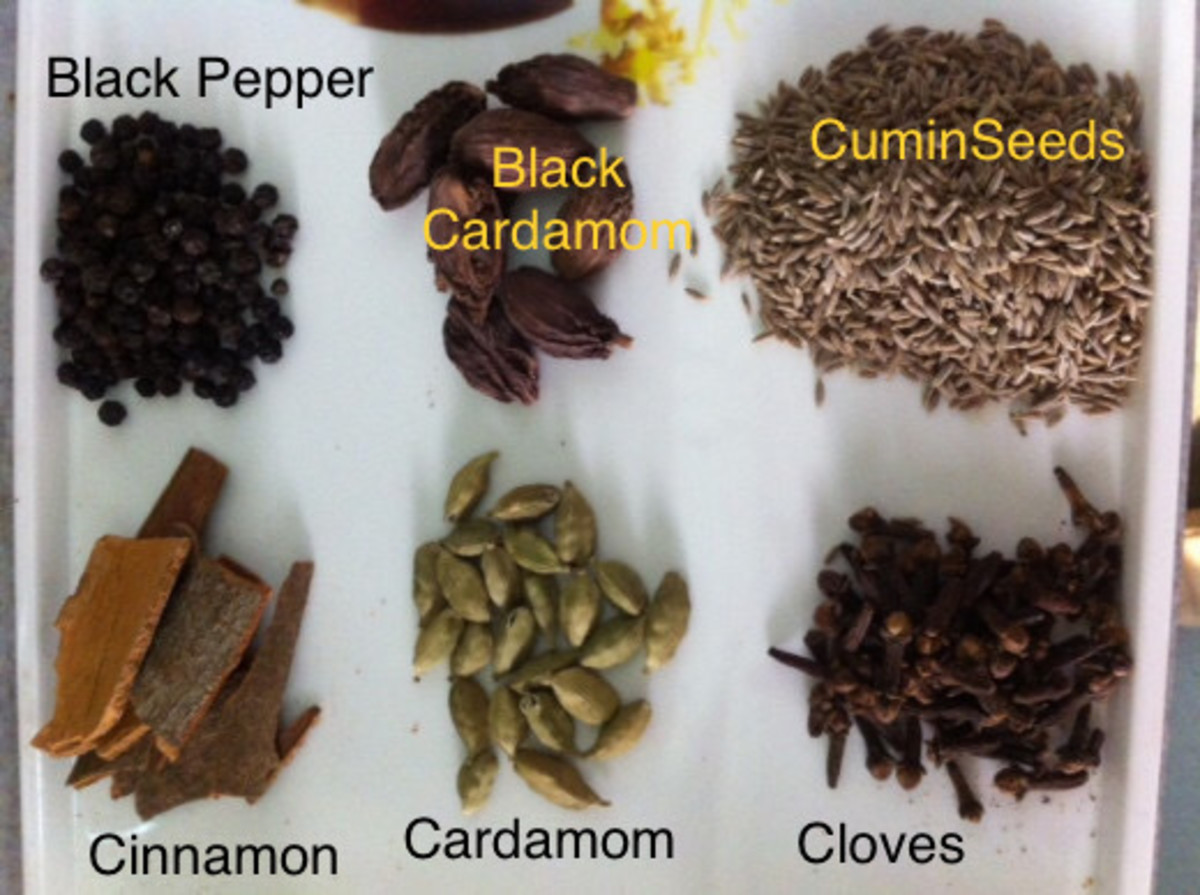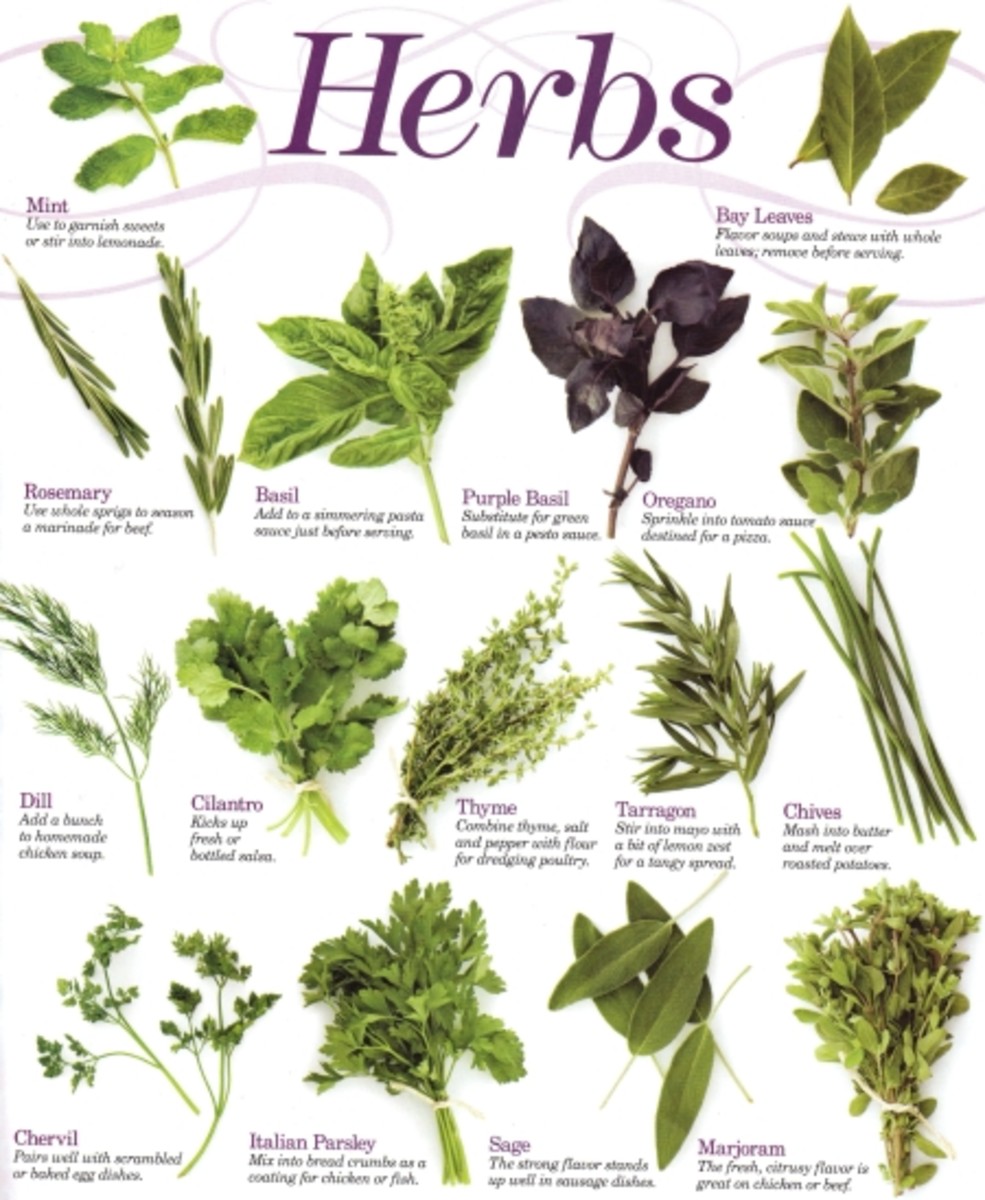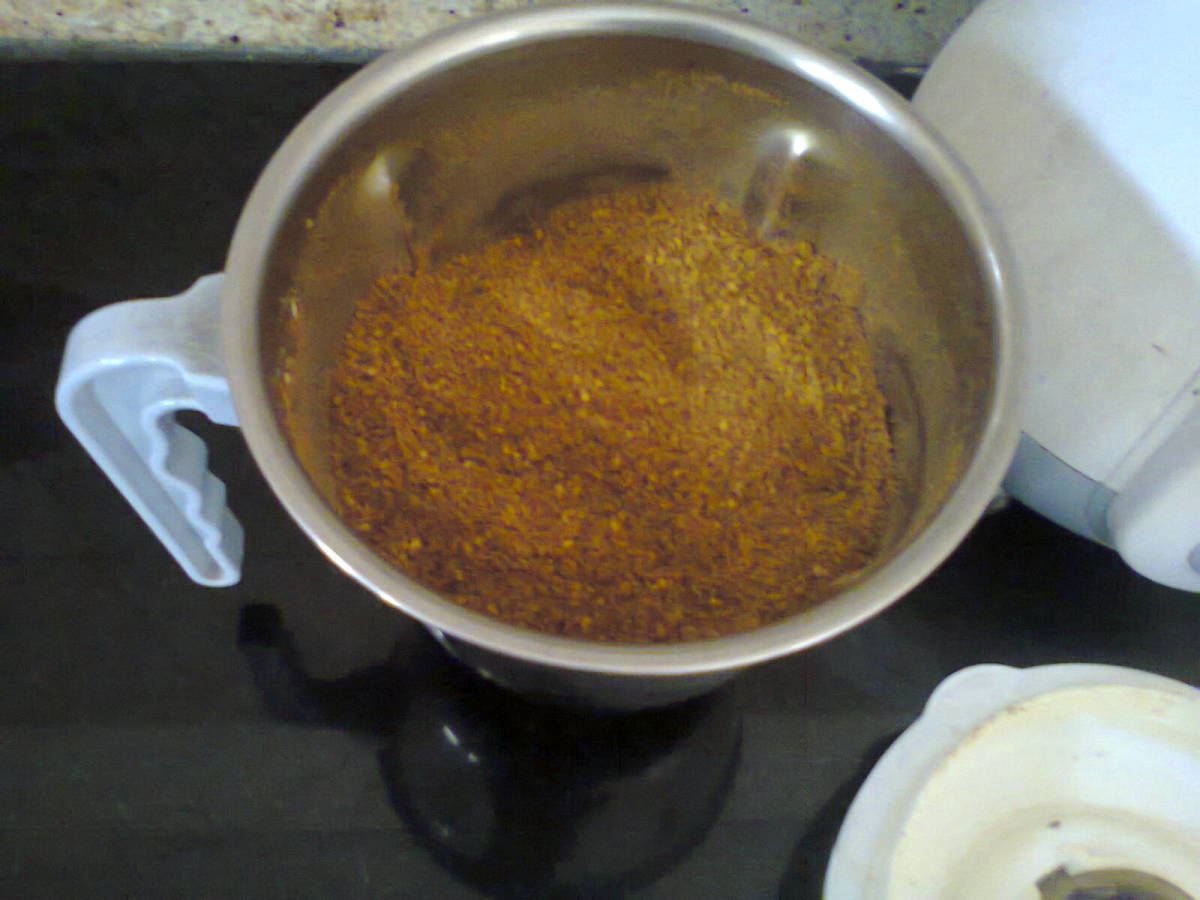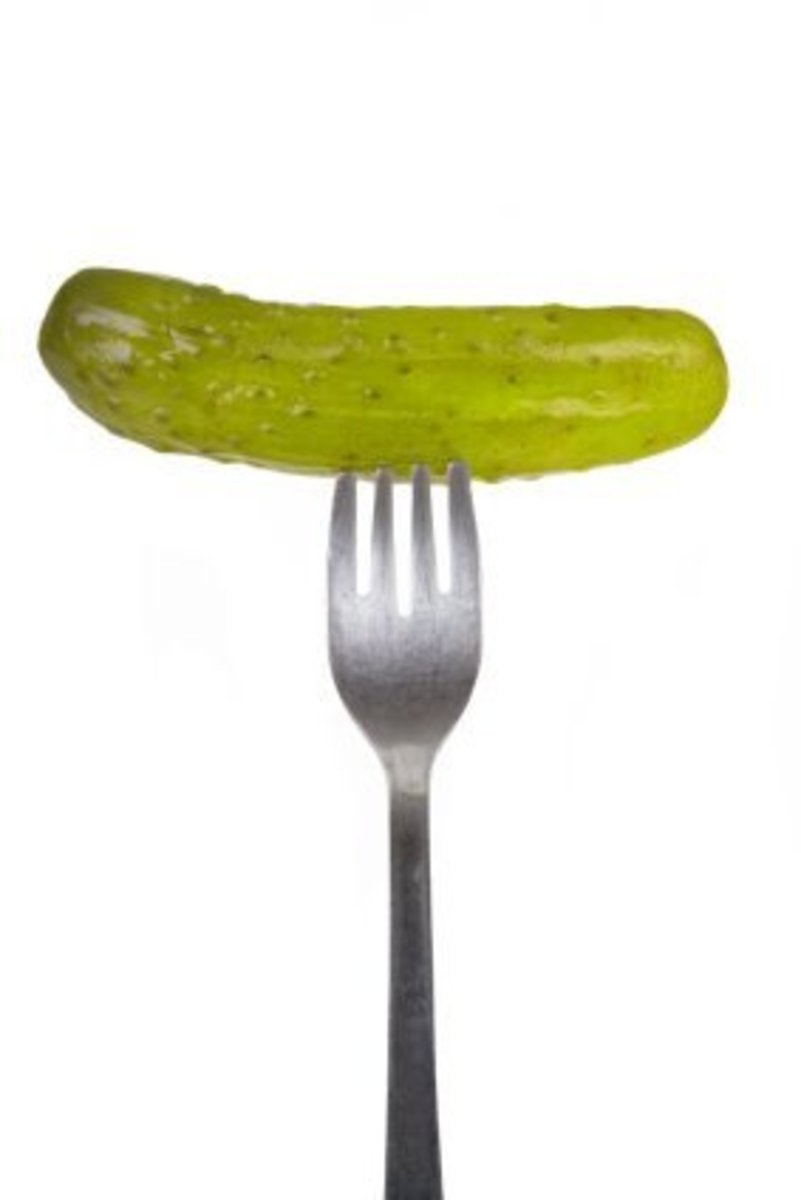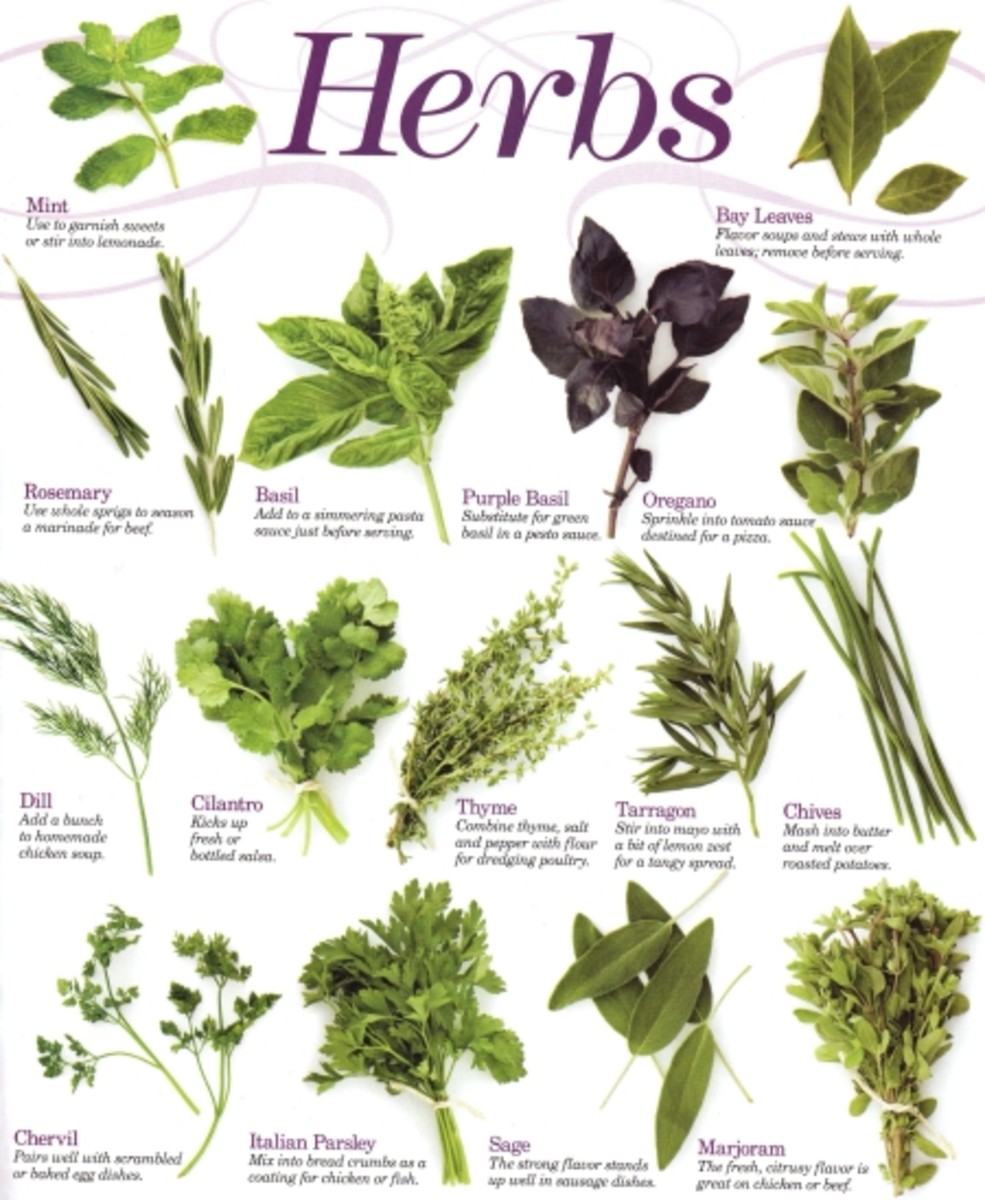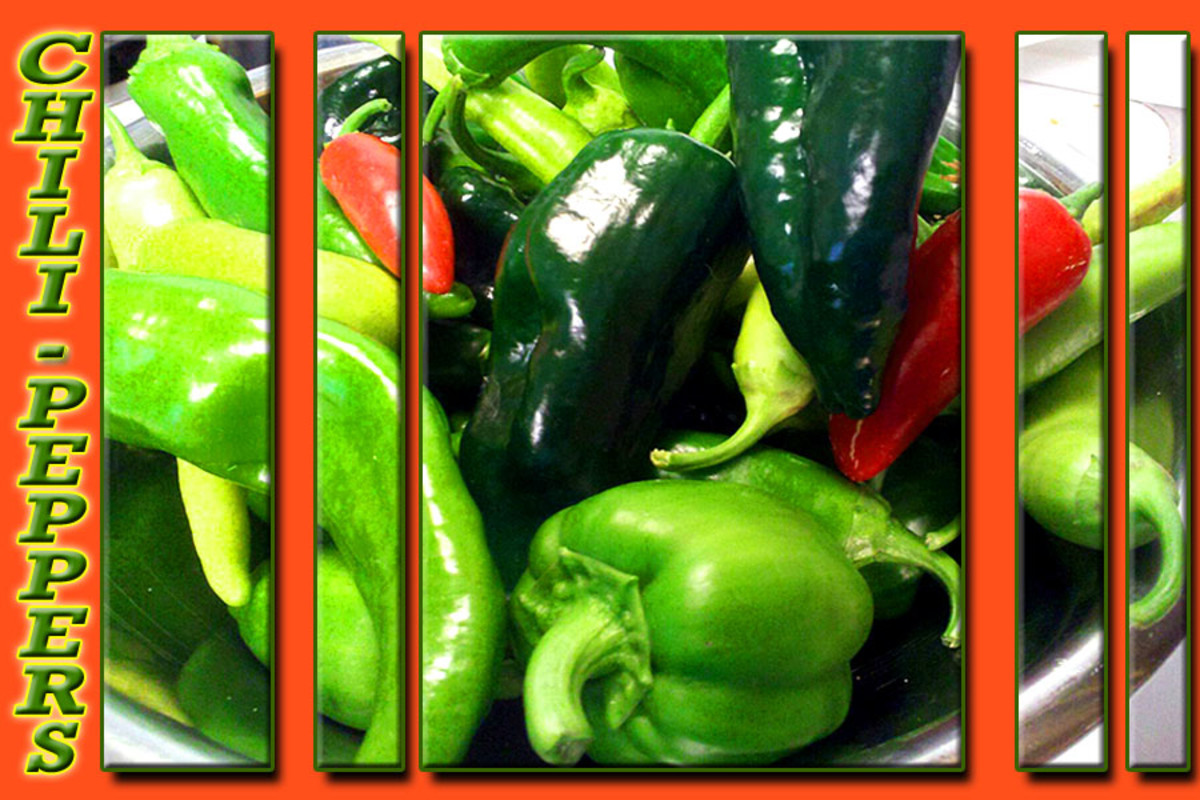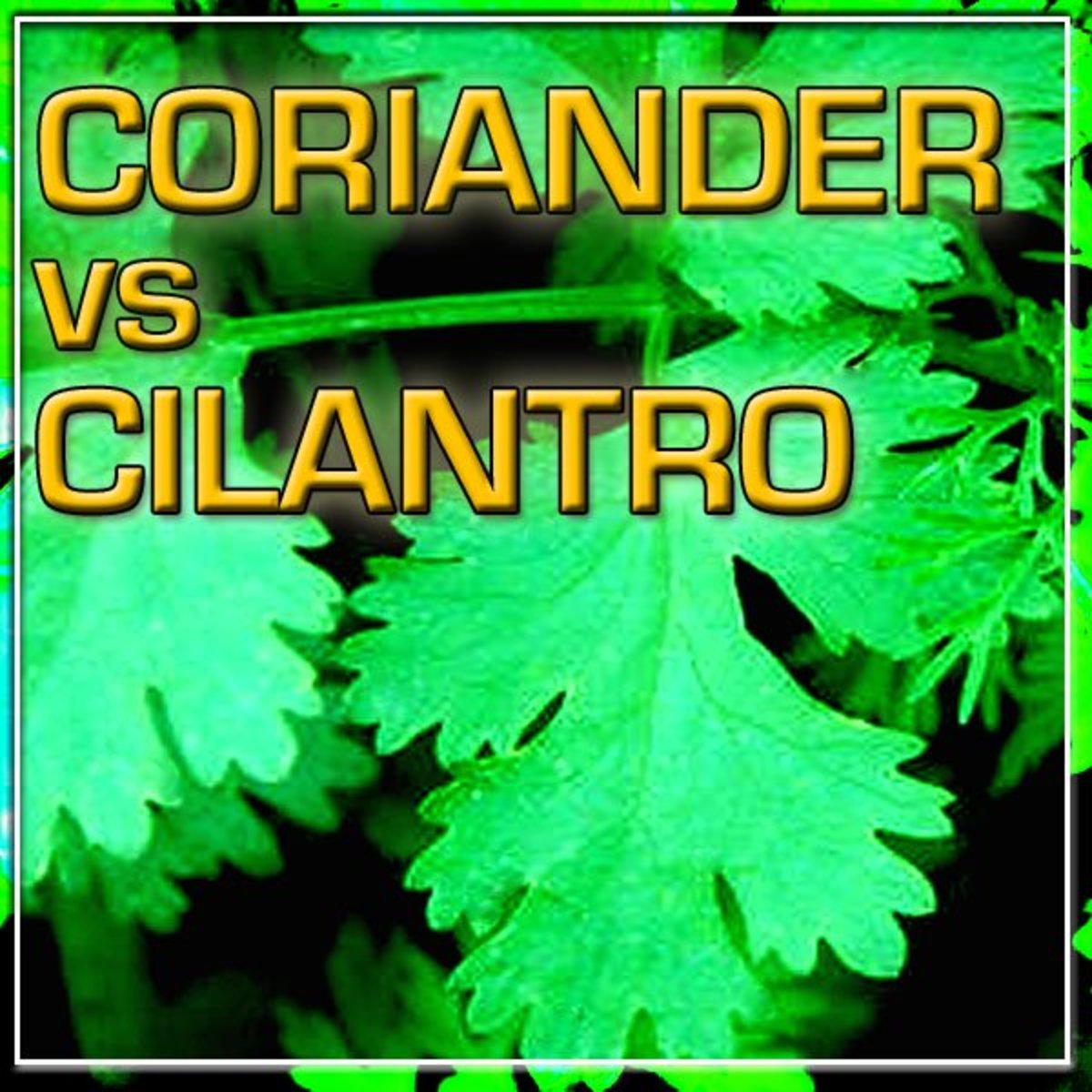History of Garam Masala a Taste of India
Garam Masala Spices
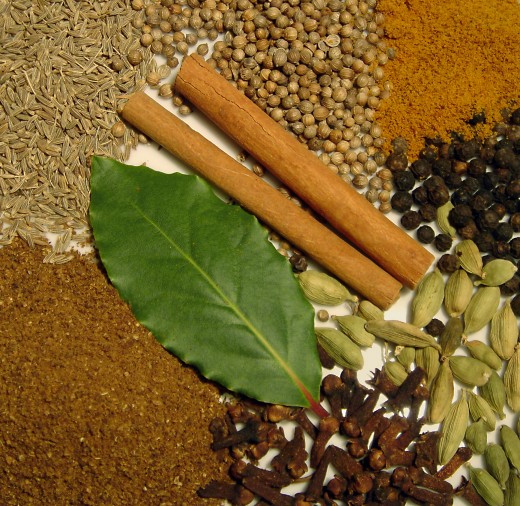
A Taste of India
Garam Masala is a spice blend common in Indian and other South Asian cuisines. The Hindi garam (“hot”) and masala (“mixture”) is a blend of ground spices. The word garam does not refer to the heat of the blend, but rather to the intensity of the spices and the blends “heating” properties in raising the body’s metabolism. Garam masala is not hot in the sense of chili peppers; it’s more of a pungent mixture.
The spices used in making a garam masala differ according to region and personal taste and can vary greatly across India. Some common ingredients are black and white peppercorns, cloves, malibar leaves, long pepper (also known as pippali), black cumin, cumin seeds, cinnamon; black, brown and green cardamom, nutmeg, star anise and coriander seeds. Various combinations of these and other spices are used in regional variations, but no combination is considered more authentic than another.
Ground Garam Masala
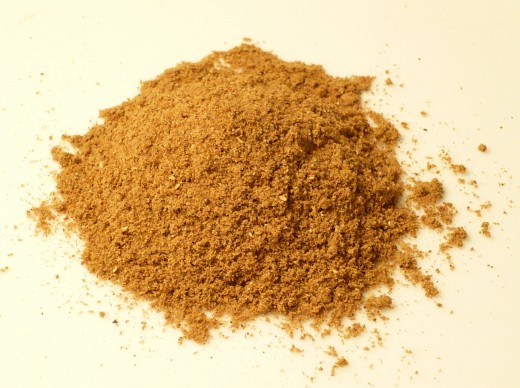
Varieties of Garam Masala
In Northwest India, garam masala usually includes cloves, green, black and/or brown cardamom, cinnamon, cassia, mace and/or nutmeg. Black pepper is sometimes added if the mixture is going to be used immediately. The addition of black pepper will change the character and flavor of the blend if it is stored. Caraway and black cumin are also typical of a garam masala from the north. The garam masala is made by combining the spices and grinding them all together; but not roasting them.
Some regional varieties blend the spices with herbs, or grind the spices with water, vinegar or other liquids, such as coconut milk to make a paste. Some recipes may even add nuts, onion or garlic.
The spices are carefully combined and blended to achieve a balanced flavor. In some cases, it may be desirable to emphasize a single flavor for a particular dish. The garam masala is usually roasted before use, this releases the flavors and aromas of the spices.
Garam masala can also be bought as a commercially prepared ground spice mixture. Many of these mixtures contain additional less expensive spices and may also include dried red chili peppers, dried garlic, ginger powder, sesame, mustard seeds, tumeric, coriander, malibar leaves, star anise and fennel.
Many of these commercially prepared blends are ground and do not keep well; they lose much of their flavor and aroma. Whole spices keep fresh much longer and can be ground when needed using a mortar and pestle or electric coffee grinder. When using commericially ground garam masala, it is usually added at the end of cooking to obtain the fullest flavor and aroma. Whole garam masala, however, is added early in the preparation of a dish. It is usually added to the cooking oil, fat or ghee, providing a much more pungent flavor.
One rite of passage for Indian cooks is learning to become a masalchi, or spice blender. And with good reason—a single Indian dish may call for as few as two or as many as a dozen individual spices to create its unique flavor.
Though not much is known about the history of garam masala, it is mentioned in Maragaret Shaida’s The Legendary Cuisine of Persia which says “Garam masala is derived from the Persian garm meaning hot and masaleh meaning ingredients or materials.” Its presence in most dishes on mughal origin suggest that it could be an import of Indo-Islamic rulers.
The fact that most of the spices in garam masala were the expensive traded ones, like cinnamon, cloves, cardamom, mace and saffron rather than cheaper locally grown ones like coriander, cumin and ginger, brings up the possibility that garam masala was originally used by the cooks in the kitchens of nobles, rather than in ordinary homes.
Garam Masala Products
Spices can offer additional benefits.
The combination of spices used in garma masala can offer many beneficial properties.
- Cinnamon is anti-microbial and anti-inflammatory and it may help boost brain function and control blood sugar in people with diabetes.
- Cumin is an excellent source of iron, it aids digestion and it has cancer-fighting properties.
- Coriander is sometimes referred to as an "anti-diabetic" plant because it helps control blood sugar. It also has anti-inflammatory properties and it helps lower cholesterol.
Tips & Warnings
- Whole spices are reasonably priced, and due to rapid turnover, are generally fresh at South Asian grocery stores.
- Keep your garam masala away from heat and sunlight to maintain freshness for up to three months or store in the refrigerator for up to six months.
- Spices last longer in the refrigerator, tightly sealed and protected from moisture.
- Be careful handling the spices as they roast. Cast iron pans hold heat longer than aluminum and can cause severe burns. Spices, which are pods, barks and leaves, can pop when exposed to high heat.
Popular Articles
- Perfect Homemade Bread Without a Bread Machine
How to make homemade bread? Baking bread at home is easier than you think. Learn how to make yeast bread and bread baking tips for perfect homemade bread every time! There are few aromas more delightful than the smell of home baked bread. It's an act - Fruit Crunch Cake
OK, it simply does not get any easier than this! Pour the fruit in the pan, sprinkle with cake mix and top with butter, brown sugar and chopped nuts. It's all ready for the oven in about 5 minutes ... no... - Deciphering the Rice Grain
When you go to buy rice are you confused by all the types and varieties on the market? Not every rice grain is created equal and we'll explain the differnce in Deciphering the Rice Grain. - Healing Powers of Apple Cider Vinegar
Apple Cider Vinegar has been used in healing for many centuries. Apple Cider Vinegar has been used as a folk remedy for ailments such as sinus infections, skin problems, dandruff, constipation, and even diabetes. It is also beneficial as a weight los - The Good News About Healthy Eating and Nutrition
Healthy eating choices can make a huge difference in how you feel. Good healthy eating choices do more than fuel our bodies. Throughout history food has been used to both prevent and treat illness. Its the combination and quantities you choose that - Authentic Parmigiano Reggiano Cheese
Parmigiano Reggiano Factory in Modena, Italy - This is a file from the Wikimedia Commons. Parmigiano Reggiano is an Italian cheese made from cows milk. It has a hard, pale-golden rind and a... - Health Benefits of Wheatgrass Juice Revealed
Wheatgrass juice is one of the most widely used supplemental health foods today. Wheatgrass juice is packed full of nutrients that are extremely beneficial to your health. The high chlorophyll content in wheatgrass juice acts as a powerful detoxifier



